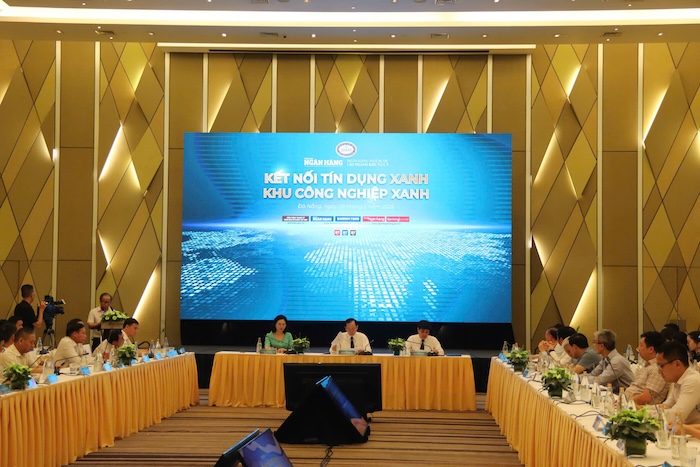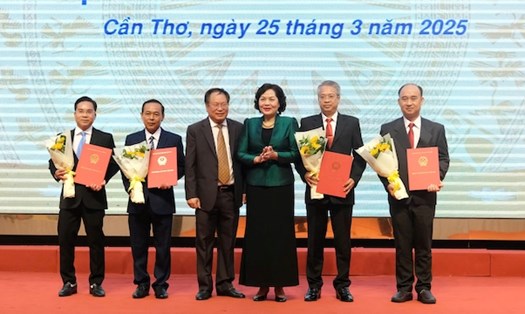There needs to be a separate mechanism for green credit in industrial parks
At the forum "Connecting green credit - Green industrial park" held in Da Nang on May 9 organized by the Banking Times in coordination with the State Bank of Vietnam, Region 9, delegates assessed the implementation of green credit, analyzed the current situation of green credit for green credit for green credit, shared international experiences and proposed solutions to promote sustainable green industrial park development.
The Permanent Deputy Governor of the SBV, Dao Minh Tu, said that the issue of green credit is not only related to the environment but also affects international economic competition, especially exports. In which, businesses need to meet green standards to survive and develop. In addition, green industrial parks are the key to developing a green economy, so it is necessary to clarify standards, criteria, resources and policy mechanisms to develop green industrial parks.
According to Mr. Dao Minh Tu, the banking industry has also made progress in green credit in general, but there needs to be a separate policy mechanism for green industrial parks. It is necessary to clearly analyze capital needs, scale, role of banking capital and other support policies.
Mr. Le Anh Xuan, Director of the State Bank of Vietnam, Region 9, also said that green transformation is an inevitable trend. Area 9, including Da Nang, Hue, Quang Nam, Quang Ngai, Quang Tri, is making efforts to promote a green economy. The State Bank of Vietnam, Region 9, has directed credit institutions to implement green credit programs with preferential interest rates. Some commercial banks have implemented many green credit products.
However, the scale of green credit is still modest compared to demand. The challenges include long capital recovery time, large investment costs for green projects, lack of green classification portfolios, limitations in training banking staff on environmental risk assessment and many businesses do not have a clear understanding of green credit. For green credit to truly be a driving force for green transformation, there should be solutions to improve access to capital, increase the proportion of green credit, reduce costs to reduce lending interest rates, promote communication and communication, improve staff capacity, perfect the legal framework, and strengthen cooperation between relevant parties.

Challenges for "greening" industrial parks
In the context of climate change and increasing environmental pollution, switching to the green industrial park (Green Industrial Park) model is an inevitable trend. Vietnam has made significant progress in developing green industrial parks since 2014, with some pioneering localities such as Da Nang, Can Tho, Ho Chi Minh City and Dong Nai. However, currently only about 1-2% of the 290 IPs operating nationwide are in the process of switching to the ecological/green model. In which, Da Nang aims to have 2 to 3 ecological industrial parks meeting national standards by 2030.
Although many businesses in the IPs have proactively switched to a circular economic model, applying cleaner production technology and implementing industrial co-biosis, building a green IP requires significant investment in infrastructure, technology and environmental management. This poses a major financial challenge for businesses.
The Permanent Deputy Governor of the SBV, Dao Minh Tu, said that the issue of green credit is not only related to the environment but also affects international economic competition, especially exports. Enterprises need to meet green standards to survive and develop. Green industrial parks are the key to developing a green economy, so it is necessary to clarify standards, criteria, resources and policy mechanisms to develop green industrial parks.














